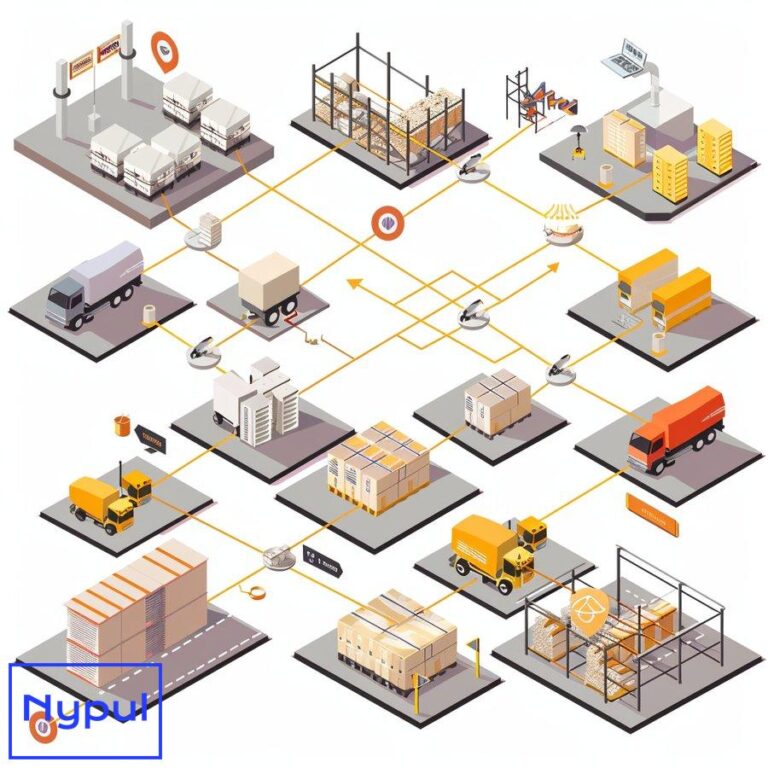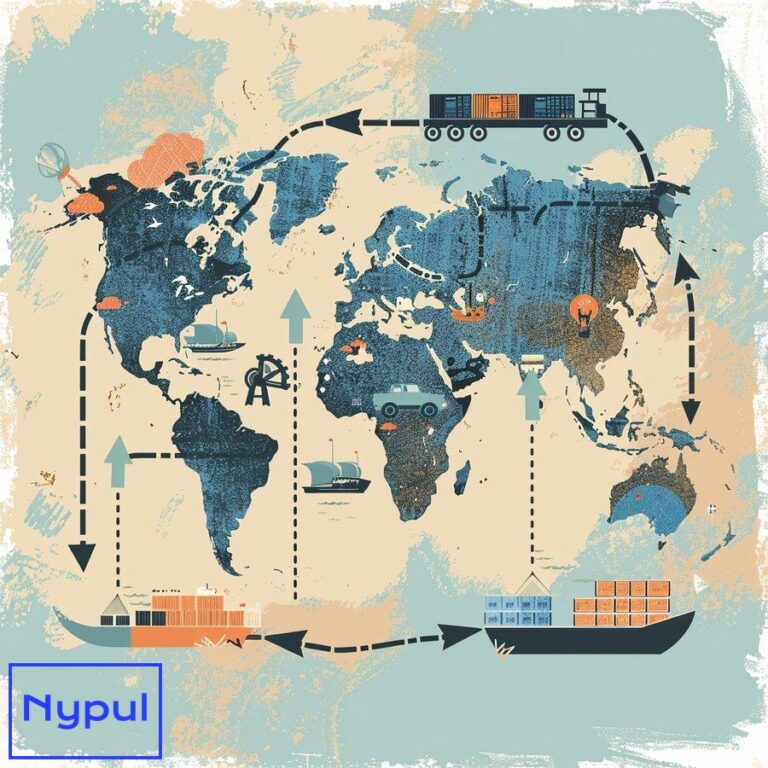How to Operate a Reefer Container
What is a reefer container and how does it work?
A reefer container, short for refrigerated container, is a specialized shipping container designed to transport temperature-sensitive cargo. These containers play a crucial role in the global supply chain, enabling the safe transportation of perishable goods across long distances while maintaining optimal temperature conditions.

Reefer containers function as mobile refrigeration units, combining the structural integrity of standard shipping containers with advanced cooling systems. The primary components of a reefer container include:
Insulated walls: The container’s walls, floor, and ceiling are constructed with thick insulation materials to minimize heat transfer between the interior and exterior environments.
Refrigeration unit: This is the heart of the reefer container, typically located at one end. It consists of a compressor, condenser, evaporator, and expansion valve, working together to maintain the desired internal temperature.
Temperature control system: A sophisticated control panel allows operators to set and monitor the internal temperature, ensuring precise climate control throughout the journey.
Air circulation system: Fans and air ducts distribute cold air evenly throughout the container, preventing hot spots and ensuring uniform cooling of the cargo.
Power supply: Reefer containers can be powered by external electrical sources when stationary or by generator sets (gen-sets) during transit.
The cooling process in a reefer container follows the basic principles of refrigeration:
- The compressor pressurizes and heats the refrigerant gas.
- The hot, high-pressure gas flows through the condenser, where it releases heat and condenses into a liquid.
- The liquid refrigerant passes through an expansion valve, which reduces its pressure and temperature.
- The cold, low-pressure refrigerant enters the evaporator, absorbing heat from the container’s interior and vaporizing.
- The cycle repeats, continuously removing heat from the container and maintaining the desired temperature.
Reefer containers can typically maintain temperatures ranging from -30°C to +30°C (-22°F to +86°F), accommodating various cargo requirements. This wide temperature range allows for the transportation of diverse products, including:
Frozen goods: Ice cream, frozen meats, and seafood
Chilled products: Fresh fruits, vegetables, dairy products, and pharmaceuticals
Temperature-sensitive items: Electronics, chemicals, and fine art
The versatility of reefer containers has revolutionized global trade, enabling the transportation of perishable goods to markets worldwide while preserving their quality and extending shelf life.
| Feature | Description | Benefit |
|---|---|---|
| Insulation | High-density foam walls, floor, and ceiling | Minimizes heat transfer, maintains temperature stability |
| Refrigeration unit | Compressor-based cooling system | Provides precise temperature control |
| Temperature range | -30°C to +30°C (-22°F to +86°F) | Accommodates various cargo types |
| Air circulation | Fans and ducts for even air distribution | Ensures uniform cooling throughout the container |
| Remote monitoring | GPS and temperature sensors | Allows real-time tracking and temperature control |
Understanding the fundamental principles and components of reefer containers is essential for anyone involved in their operation. This knowledge forms the foundation for proper handling, maintenance, and troubleshooting, ensuring the safe and efficient transportation of temperature-sensitive cargo across global supply chains.
How do you prepare a reefer container for operation?
Proper preparation of a reefer container is crucial for ensuring the safe and efficient transportation of temperature-sensitive cargo. This process involves several key steps that must be carried out meticulously to guarantee optimal performance throughout the journey.
Inspection and cleaning
Begin by thoroughly inspecting the container’s interior and exterior. Look for any signs of damage, such as dents, holes, or cracks that could compromise the container’s insulation or structural integrity. Pay special attention to the door seals, ensuring they are intact and capable of maintaining an airtight seal.
Clean the container’s interior using appropriate cleaning agents and disinfectants. This step is particularly important when transporting food products or pharmaceuticals to prevent contamination and maintain hygiene standards.
Refrigeration system check
Examine the refrigeration unit for any visible damage or signs of wear. Verify that all components, including the compressor, condenser, and evaporator, are in good working condition. Check refrigerant levels and top up if necessary, following manufacturer guidelines and environmental regulations.
Test the temperature control system by running the unit through its full range of temperatures. This process helps identify any potential issues with temperature regulation before loading cargo.
Power supply verification
Ensure that the container’s power connections are compatible with the available power sources at both the origin and destination. This includes checking voltage requirements and plug configurations. If using a generator set (gen-set), verify its fuel levels and overall condition.
Pre-trip inspection (PTI)
Conduct a comprehensive pre-trip inspection, which typically includes:
Thermostat calibration: Verify that the thermostat accurately reflects the internal temperature.
Temperature recorder test: Ensure that the temperature recording device is functioning correctly and properly calibrated.
Defrost cycle check: Test the defrost system to confirm it operates as intended, preventing ice buildup on the evaporator coils.
Air leakage test: Perform a pressure test to detect any air leaks that could affect temperature stability.
Pre-cooling
Pre-cool the container to the required temperature before loading cargo. This process can take several hours, depending on the target temperature and ambient conditions. Pre-cooling helps minimize temperature fluctuations during loading and reduces strain on the refrigeration system.
Documentation and record-keeping
Prepare and organize all necessary documentation, including:
Maintenance records: Document any recent repairs or maintenance activities.
Temperature logs: Set up temperature recording devices and ensure they are properly configured.
Cargo-specific requirements: Review any special instructions or temperature requirements for the specific cargo being transported.
Safety equipment check
Verify the presence and condition of essential safety equipment, such as:
Fire extinguishers: Ensure they are fully charged and easily accessible.
First aid kits: Check contents and expiration dates.
Personal protective equipment (PPE): Provide appropriate PPE for handling potentially hazardous materials or extreme temperatures.
Cargo loading preparation
Plan the cargo loading process in advance:
Load plan: Develop a detailed load plan that maximizes space utilization while ensuring proper air circulation.
Dunnage and securing materials: Prepare appropriate materials for securing the cargo and preventing shifting during transit.
Temperature probes: If required, install calibrated temperature probes at strategic locations within the container.
By meticulously following these preparation steps, operators can significantly reduce the risk of equipment failure, temperature excursions, and cargo damage during transit. This comprehensive approach to reefer container preparation sets the stage for a successful and efficient transportation process.
| Preparation Step | Key Actions | Importance |
|---|---|---|
| Inspection and cleaning | Check for damage, clean interior | Prevents contamination, ensures structural integrity |
| Refrigeration system check | Test all components, verify refrigerant levels | Ensures proper cooling function |
| Power supply verification | Check compatibility, test connections | Prevents power-related issues during transit |
| Pre-trip inspection (PTI) | Calibrate thermostat, test defrost cycle | Identifies potential issues before departure |
| Pre-cooling | Cool container to target temperature | Reduces temperature fluctuations during loading |
| Documentation | Organize maintenance records, set up temperature logs | Ensures compliance and facilitates monitoring |
| Safety equipment check | Verify fire extinguishers, first aid kits | Prepares for potential emergencies |
| Cargo loading preparation | Develop load plan, prepare securing materials | Optimizes space usage and cargo stability |
Proper preparation of a reefer container is a critical step in the logistics chain, directly impacting the quality and safety of temperature-sensitive cargo. By investing time and effort in thorough preparation, operators can minimize risks, improve efficiency, and ensure the successful delivery of goods in optimal condition.
What are the key steps in loading a reefer container?

Loading a reefer container is a critical process that requires careful planning and execution to ensure the safety and quality of temperature-sensitive cargo. Proper loading techniques not only maximize space utilization but also maintain consistent temperature distribution throughout the container. Here are the key steps involved in loading a reefer container:
Pre-loading preparations
Before beginning the loading process, several preparatory steps must be completed:
Temperature verification: Confirm that the container has reached the desired pre-cooling temperature. This step is crucial for minimizing temperature fluctuations during loading.
Cargo inspection: Examine the cargo to ensure it meets quality standards and is at the correct temperature. Reject any items that show signs of damage or temperature abuse.
Documentation check: Review all necessary paperwork, including temperature requirements, handling instructions, and customs documentation.
Loading area preparation: Clear the loading area of any obstacles and ensure proper lighting and ventilation. Position the container for easy access and efficient loading.
Loading process
The actual loading of the reefer container involves several critical steps:
Cargo arrangement: Follow the pre-determined load plan, which should consider weight distribution, airflow requirements, and compatibility of different products.
Air circulation: Maintain proper air circulation by leaving adequate space between the cargo and the container walls, ceiling, and floor. Use spacers or dunnage to create air channels if necessary.
Weight distribution: Distribute the weight evenly across the container floor to maintain stability during transport. Avoid concentrating heavy items in one area.
Securing the cargo: Use appropriate securing methods such as straps, load bars, or airbags to prevent shifting during transit. Ensure that securing materials do not obstruct airflow.
Temperature monitoring: Place temperature monitoring devices at strategic locations within the load, particularly in areas most susceptible to temperature fluctuations.
Stacking considerations
Proper stacking techniques are essential for maximizing space utilization and maintaining cargo integrity:
Stack stability: Use interlocking patterns when stacking boxes or pallets to increase stability. Avoid creating tall, unstable stacks that could topple during transit.
Weight capacity: Respect the weight limits of packaging materials and avoid overloading bottom layers.
Product compatibility: When loading mixed cargo, consider the compatibility of different products in terms of temperature requirements, odor transfer, and potential cross-contamination.
Specialized loading techniques
Certain types of cargo may require specialized loading techniques:
Hanging meat: Use meat rails and hooks to suspend carcasses, ensuring proper air circulation and preventing contact with container surfaces.
Palletized goods: Secure pallets to the container floor and use corner protectors to prevent damage to packaging.
Bulk produce: Use ventilated bins or crates to allow for proper air circulation around fresh fruits and vegetables.
Final checks and sealing
Before sealing the container, perform these final checks:
Visual inspection: Conduct a final visual inspection to ensure all cargo is properly loaded and secured.
Temperature verification: Check that the internal temperature remains within the acceptable range after loading.
Door seal inspection: Examine the door seals for any damage or obstructions that could compromise the container’s airtight seal.
Sealing: Apply the appropriate security seals and record the seal numbers in the shipping documentation.
Documentation completion
Complete all necessary documentation, including:
Cargo manifest: Update the manifest with any changes made during the loading process.
Temperature records: Document the temperature at the start and end of the loading process.
Photographic evidence: If required, take photographs of the loaded container for record-keeping and potential claims resolution.
| Loading Step | Key Considerations | Best Practices |
|---|---|---|
| Pre-loading preparations | Temperature verification, cargo inspection | Ensure container and cargo are at correct temperatures |
| Cargo arrangement | Weight distribution, air circulation | Follow load plan, maintain air channels |
| Securing cargo | Prevent shifting, maintain airflow | Use appropriate securing methods without obstructing air circulation |
| Temperature monitoring | Strategic placement of monitoring devices | Focus on areas prone to temperature fluctuations |
| Stacking techniques | Stability, weight capacity | Use interlocking patterns, respect packaging limits |
| Specialized loading | Product-specific requirements | Adapt techniques for hanging meat, palletized goods, etc. |
| Final checks and sealing | Visual inspection, temperature verification | Ensure proper loading and maintain temperature before sealing |
| Documentation | Cargo manifest, temperature records | Complete all required paperwork accurately |
By meticulously following these key steps in loading a reefer container, operators can significantly reduce the risk of cargo damage, temperature excursions, and other issues during transit. Proper loading techniques not only protect the cargo but also contribute to the overall efficiency and reliability of the cold chain logistics process.
How do you set and monitor temperature controls?
Setting and monitoring temperature controls in reefer containers is a critical aspect of ensuring the safe and efficient transportation of temperature-sensitive cargo. Proper temperature management is essential for maintaining product quality, extending shelf life, and complying with regulatory requirements. Here’s a comprehensive guide on how to effectively set and monitor temperature controls in reefer containers:
Understanding temperature requirements
Before setting the temperature controls, it’s crucial to have a clear understanding of the cargo’s specific temperature requirements:
Product specifications: Review the manufacturer’s or shipper’s guidelines for optimal storage and transportation temperatures.
Regulatory compliance: Be aware of any legal requirements or industry standards governing the transportation of specific products, such as pharmaceuticals or perishable foods.
Temperature ranges: Understand the acceptable temperature range for the cargo, including both the ideal temperature and the maximum allowable deviations.
Setting the temperature controls
Once the temperature requirements are established, follow these steps to set the reefer container’s temperature controls:
Access the control panel: Locate the container’s control panel, typically situated near the refrigeration unit.
Select operating mode: Choose the appropriate operating mode (e.g., continuous run, start/stop) based on the cargo requirements and journey duration.
Set the target temperature: Input the desired temperature using the control panel interface. Double-check the entered value for accuracy.
Configure alarms: Set temperature alarm thresholds to alert operators if the internal temperature deviates beyond acceptable limits.
Adjust airflow settings: If applicable, configure airflow settings to ensure proper air circulation throughout the container.
Verify settings: After inputting all parameters, review the settings to confirm they match the cargo requirements.
Initiating temperature control
After setting the controls, take the following steps to initiate and stabilize the temperature:
Power on the unit: Ensure the reefer container is connected to a power source and turn on the refrigeration system.
Monitor initial cool-down: Observe the temperature decrease until it reaches the target value. This process may take several hours, depending on the starting temperature and target.
Verify stable operation: Once the target temperature is reached, monitor the system for a period to ensure it maintains a stable temperature.
Continuous monitoring
Ongoing temperature monitoring is essential throughout the entire journey:
Regular checks: Implement a schedule for regular temperature checks, either manually or through automated systems.
Data logging: Use temperature data loggers to continuously record internal temperatures. Many modern reefer containers come equipped with built-in data logging capabilities.
Remote monitoring: Utilize remote monitoring systems that allow real-time tracking of container temperatures and alert operators to any issues.
Cargo temperature probes: For high-value or extremely sensitive cargo, consider using additional temperature probes placed directly within the cargo.
Interpreting temperature data
Effective temperature monitoring involves more than just collecting data; it requires proper interpretation:
Temperature patterns: Analyze temperature logs to identify any patterns or trends that may indicate potential issues with the refrigeration system.
Defrost cycles: Understand how defrost cycles affect temperature readings and distinguish these normal fluctuations from problematic temperature excursions.
Temperature mapping: For critical shipments, consider conducting temperature mapping studies to identify any hot or cold spots within the container.
Responding to temperature deviations
If temperature deviations occur, prompt action is necessary:
Alarm response: Develop and follow a clear protocol for responding to temperature alarms, including steps for investigation and corrective actions.
Troubleshooting: Train operators in basic troubleshooting techniques to address common temperature control issues.
Escalation procedures: Establish clear guidelines for when to escalate temperature-related issues to technical support or emergency services.
Documentation and reporting
Maintain comprehensive records of temperature control activities:
Temperature logs: Keep detailed logs of all temperature readings, including date, time, and any actions taken.
Incident reports: Document any temperature excursions, including the duration, potential causes, and corrective actions implemented.
Compliance records: Maintain all necessary documentation to demonstrate compliance with regulatory requirements and customer specifications.
| Aspect | Key Considerations | Best Practices |
|---|---|---|
| Temperature requirements | Product specifications, regulatory compliance | Review guidelines, understand acceptable ranges |
| Setting controls | Target temperature, alarm thresholds | Double-check entered values, configure alarms |
| Monitoring methods | Regular checks, data logging, remote monitoring | Implement continuous monitoring systems |
| Data interpretation | Temperature patterns, defrost cycles | Analyze trends, distinguish normal fluctuations |
| Deviation response | Alarm protocols, troubleshooting procedures | Develop clear response and escalation procedures |
| Documentation | Temperature logs, incident reports | Maintain comprehensive records for compliance |
Effective setting and monitoring of temperature controls in reefer containers require a combination of technical knowledge, attention to detail, and proactive communication among all stakeholders involved in the logistics chain. By implementing these practices, operators can ensure the integrity of temperature-sensitive cargo throughout the entire shipping process.
What power management strategies should be employed?
Power management is a critical aspect of operating reefer containers, as it directly impacts the efficiency of the refrigeration system and the overall cost of transportation. Effective power management strategies can help minimize energy consumption, reduce operational costs, and enhance the reliability of temperature control. Here are essential strategies to consider:
Understanding power requirements
Before implementing power management strategies, it’s crucial to understand the power requirements of the reefer container:
-
Power consumption: Familiarize yourself with the container’s power consumption specifications, typically measured in kilowatts (kW). This information is usually provided by the manufacturer.
-
Voltage compatibility: Ensure that the reefer container’s electrical system is compatible with available power sources at both the origin and destination. Common voltages include 220V, 380V, and 460V.
-
Generator specifications: If using a generator set (gen-set), verify that it meets the power requirements of the reefer container and has sufficient fuel capacity for the journey.
Utilizing energy-efficient technologies
Implementing energy-efficient technologies can significantly reduce power consumption:
-
Variable speed compressors: These compressors adjust their speed based on cooling demand, leading to lower energy usage compared to traditional fixed-speed compressors.
-
LED lighting: Replace traditional lighting with LED fixtures within the container to minimize energy consumption while maintaining adequate visibility.
-
Smart controllers: Use advanced control systems that optimize refrigeration cycles based on real-time data, reducing unnecessary energy usage.
Power source management
Managing power sources effectively ensures continuous operation without interruptions:
-
Dual power supply options: Equip reefer containers with dual power supply options (e.g., shore power and generator) to provide flexibility in different environments.
-
Automatic transfer switches (ATS): Implement ATS to seamlessly switch between power sources in case of an outage or failure.
-
Battery backup systems: Consider installing battery backup systems that can provide temporary power during transitions between shore power and generator operation.
Monitoring and data analysis
Continuous monitoring of power usage allows for informed decision-making:
-
Power monitoring systems: Install power monitoring systems that track real-time energy consumption and performance metrics. This data helps identify inefficiencies and areas for improvement.
-
Data logging: Utilize data loggers to record historical energy usage patterns, allowing operators to analyze trends over time and make adjustments as necessary.
-
Remote monitoring capabilities: Leverage remote monitoring technologies to track power usage from a distance, enabling timely responses to any issues that arise.
Implementing best practices
Adopting best practices for power management can yield significant benefits:
-
Regular maintenance: Schedule regular maintenance for refrigeration units and electrical systems to ensure optimal performance and prevent unexpected failures.
-
Load optimization: Optimize loading patterns to minimize energy consumption. For example, avoid overloading or underloading the container, as both conditions can lead to inefficient cooling cycles.
-
Training personnel: Provide training for personnel on best practices for operating reefer containers, including energy-saving techniques and emergency procedures.
| Strategy | Key Actions | Benefits |
|---|---|---|
| Understanding power requirements | Familiarize with consumption specs, voltage compatibility | Ensures proper setup and operation |
| Utilizing energy-efficient technologies | Implement variable speed compressors, LED lighting | Reduces overall energy consumption |
| Power source management | Use dual supply options, ATS | Provides flexibility and reliability |
| Monitoring and data analysis | Install monitoring systems, utilize data loggers | Identifies inefficiencies for improvement |
| Implementing best practices | Schedule maintenance, optimize loading patterns | Enhances efficiency and reduces costs |
By employing these power management strategies, operators can enhance the efficiency of reefer container operations while ensuring reliable temperature control for sensitive cargo. This proactive approach not only reduces operational costs but also contributes to sustainability efforts within the logistics industry.
How do you troubleshoot common reefer container issues?
Troubleshooting common issues with reefer containers is essential for maintaining efficient operations and ensuring the integrity of temperature-sensitive cargo. Understanding potential problems and their solutions allows operators to act quickly when issues arise. Here are some common issues encountered with reefer containers along with troubleshooting steps:
Temperature fluctuations
Temperature fluctuations can jeopardize cargo quality. Common causes include:
- Insufficient airflow: Blocked air vents or improper loading can restrict airflow within the container.
Troubleshooting: Check air circulation pathways and ensure there are no obstructions. Adjust cargo placement if necessary to allow for proper airflow.
- Refrigeration unit failure: A malfunctioning compressor or other components can lead to inadequate cooling.
Troubleshooting: Inspect the refrigeration unit for signs of damage or wear. Conduct tests on key components (compressor, evaporator) to identify any failures requiring repair or replacement.
- Power supply issues: Inconsistent or interrupted power can affect temperature control.
Troubleshooting: Verify that the container is properly connected to a stable power source. Check generator functionality if applicable. Monitor voltage levels to ensure they meet specifications.
Humidity problems
Excessive humidity within a reefer container can lead to condensation and spoilage:
- High humidity levels: This may occur due to improper sealing or excessive moisture in the cargo.
Troubleshooting: Inspect door seals for damage or wear. Ensure that cargo is adequately dried before loading. Consider using desiccants if necessary.
- Defrost cycle issues: A malfunctioning defrost system may lead to ice buildup.
Troubleshooting: Check defrost settings on the control panel. Manually initiate a defrost cycle if needed. Inspect heating elements for functionality.
Mechanical failures
Mechanical failures can disrupt operations significantly:
- Compressor failure: A common issue that can halt cooling entirely.
Troubleshooting: Listen for unusual noises from the compressor. Check refrigerant levels; low levels may indicate leaks. If necessary, consult a technician for repairs.
- Fan malfunctions: Fans are crucial for air circulation within the container.
Troubleshooting: Inspect fans for obstructions or damage. Test fan operation; replace faulty fans as needed.
Control system errors
Errors in the control system may lead to incorrect temperature settings or alarms:
- Faulty sensors: Temperature sensors may provide inaccurate readings if damaged.
Troubleshooting: Test sensor accuracy using calibrated equipment. Replace faulty sensors promptly.
- Control panel malfunctions: Issues with wiring or software can cause erratic behavior.
Troubleshooting: Inspect wiring connections for damage or corrosion. Reset control panel settings if necessary; consult manufacturer guidelines for troubleshooting steps.
| Issue | Common Causes | Troubleshooting Steps |
|---|---|---|
| Temperature fluctuations | Insufficient airflow, refrigeration unit failure | Check airflow pathways; inspect refrigeration unit |
| Humidity problems | High humidity levels, defrost cycle issues | Inspect seals; check defrost settings |
| Mechanical failures | Compressor failure, fan malfunctions | Listen for noises; test fan operation |
| Control system errors | Faulty sensors, control panel malfunctions | Test sensor accuracy; inspect wiring |
By being proactive in identifying potential issues and employing effective troubleshooting techniques, operators can minimize downtime and maintain optimal conditions within reefer containers. Regular training on troubleshooting procedures enhances personnel readiness and contributes to overall operational efficiency.
What maintenance procedures are essential for reefer containers?
Regular maintenance procedures are vital for ensuring that reefer containers operate efficiently and reliably throughout their lifecycle. Proper maintenance not only extends the lifespan of refrigeration equipment but also safeguards temperature-sensitive cargo during transit. Here are essential maintenance procedures that should be followed:
Routine inspections
Conduct routine inspections of both the interior and exterior components of the reefer container:
- Visual checks: Regularly inspect seals, gaskets, doors, and insulation for signs of wear or damage.
Frequency: Perform visual inspections before each trip as part of pre-loading checks.
- Refrigeration unit assessment: Examine key components such as compressors, condensers, evaporators, and fans for signs of wear or malfunction.
Frequency: Conduct detailed inspections every three months or after every major shipment.
Cleaning procedures
Keeping a clean environment inside the reefer container is crucial:
- Interior cleaning: After unloading cargo, thoroughly clean all surfaces using appropriate cleaning agents to prevent contamination.
Frequency: Clean after each use or whenever transporting different types of cargo (especially food products).
- Exterior cleaning: Regularly wash down the exterior surfaces of the container to remove dirt and debris that could affect performance.
Frequency: Clean monthly or as needed based on environmental conditions.
Refrigeration system maintenance
The refrigeration system requires specific attention:
- Refrigerant checks: Monitor refrigerant levels regularly; low levels may indicate leaks.
Frequency: Check refrigerant levels during routine inspections; recharge as necessary following manufacturer guidelines.
- Component servicing: Schedule professional servicing for critical components such as compressors every six months.
Frequency: Follow manufacturer recommendations based on usage patterns.
- Defrosting system checks: Ensure that defrost cycles operate correctly by inspecting heating elements and timers.
Frequency: Review defrost systems during routine inspections; conduct manual tests monthly if issues arise frequently.
Electrical system maintenance
Maintaining electrical systems is vital for reliable operation:
- Connection checks: Regularly inspect electrical connections for corrosion or damage that could impact performance.
Frequency: Check connections during routine inspections; tighten loose connections as needed.
- Control panel servicing: Ensure that control panels function correctly by testing buttons, displays, and alarms periodically.
Frequency: Test control panels monthly; consult manufacturers if any irregularities are noted.
How do you properly unload and shut down a reefer container?
Proper unloading procedures are essential for maintaining product quality while shutting down a reefer container requires careful attention to detail. Here’s how to effectively unload cargo from a reefer container while ensuring safe shutdown practices afterward:
Unloading Procedures
- Preparation
- Ensure that all necessary equipment is available at the unloading site (e.g., forklifts, pallet jacks).
-
Confirm that receiving personnel are ready to accept cargo upon unloading.

-
Temperature Monitoring
- Continuously monitor internal temperatures during unloading using portable temperature probes if necessary.
-
Record temperatures at various points during unloading to ensure compliance with product specifications.
-
Cargo Inspection
- Inspect each item as it is unloaded for signs of damage or temperature abuse.
-
Document any discrepancies immediately in case claims need to be filed later.
-
Proper Handling
- Use appropriate lifting techniques when handling heavy items to prevent injuries.
-
Ensure that all personnel involved in unloading wear proper personal protective equipment (PPE).
-
Cargo Placement
- Place unloaded items in designated areas according to their storage requirements (e.g., refrigerated storage).
- Maintain organization throughout unloading to facilitate efficient inventory management.
Shut Down Procedures
- Final Temperature Check
- Before shutting down the refrigeration unit, conduct a final temperature check within the container.
-
Document this final reading as part of record keeping.
-
Power Disconnection
- Disconnect any external power sources carefully while ensuring safety protocols are followed.
-
If applicable, turn off generator sets following proper shutdown procedures outlined by manufacturers.
-
Control Panel Settings
- Return all control panel settings back to default mode unless specified otherwise by company policies.
-
Document any changes made during operation in maintenance logs.
-
Cleaning Process
- Clean interior surfaces thoroughly after unloading using appropriate cleaning agents.
-
Ensure that all debris from unloading is removed from within the container.
-
Inspection Before Sealing
- Conduct a final inspection of seals and gaskets before sealing doors shut after cleaning.
-
Ensure all doors are securely closed but not locked until ready for transport again.
-
Documentation Completion
-
Complete all necessary documentation related to unloading activities including temperature logs,
incident reports (if applicable), etc. -
Storage Preparation
- Store empty containers in designated areas away from potential hazards such as extreme weather conditions.
By following these unloading and shutdown procedures diligently operators can maintain high standards of safety while ensuring optimal performance from their refrigerated containers going forward into future shipments.
What safety regulations must be followed when operating reefer containers?
Operating reefer containers involves adhering strictly to safety regulations designed not only protect personnel but also ensure compliance with industry standards governing transportation practices involving perishable goods . Here’s an overview of key safety regulations relevant when operating these specialized shipping units :
Regulatory Frameworks
1 . International Maritime Organization (IMO) Guidelines
– The IMO provides guidelines regarding safe transport practices involving hazardous materials which may include certain refrigerated goods .
– Operators must familiarize themselves with relevant sections pertaining specifically towards refrigerated transport .

2 . Food Safety Regulations
– For food products transported via refrigerated containers , compliance with local food safety laws is paramount .
– Regulations often dictate specific temperature ranges required throughout transit periods based upon product types being transported .
3 . Occupational Safety & Health Administration (OSHA) Standards
– OSHA outlines comprehensive workplace safety standards aimed at protecting employees working around heavy machinery such as forklifts used during loading/unloading processes .
– Training programs should incorporate OSHA guidelines covering safe handling techniques , proper use PPE , etc .
Best Practices
1 . Training Programs
– Implement regular training sessions focused on safe operations related specifically towards handling refrigerated units .
– Topics should cover emergency response procedures , identification potential hazards , etc .
2 . Personal Protective Equipment (PPE)
– Ensure all personnel involved in loading/unloading operations wear appropriate PPE including gloves , masks , goggles where necessary .
– Regularly inspect PPE items ensuring they remain functional & compliant with safety standards .
3 . Emergency Preparedness
– Develop emergency response plans addressing potential incidents such as refrigerant leaks , electrical failures , etc .
– Conduct drills periodically testing response times & effectiveness among staff members .
4 . Regular Maintenance Checks
– Schedule routine maintenance checks ensuring all components remain functional & compliant with regulatory standards .
– Document findings from inspections providing transparency regarding equipment status & safety compliance .
5 . Environmental Considerations
– Follow environmental regulations concerning disposal methods used when handling refrigerants deemed hazardous under local laws .
– Train staff members regarding sustainable practices related towards minimizing waste generated throughout operations .
By adhering closely established safety regulations operators not only protect themselves but also contribute positively towards maintaining high standards overall quality assurance across cold chain logistics operations .
This comprehensive approach ensures both compliance & efficiency while safeguarding valuable perishable goods transported via refrigerated containers around world markets today .






